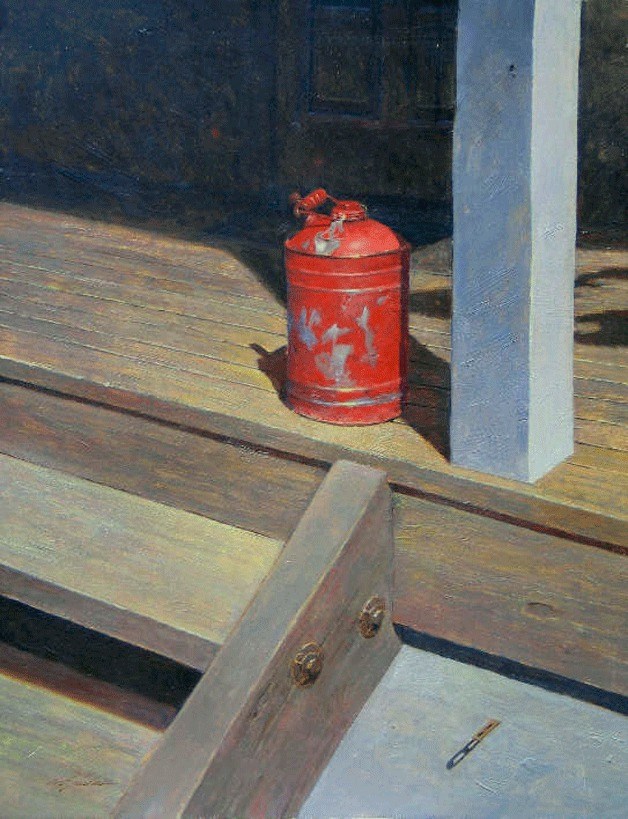Painter Pete Jordan likes to sit in a place and just hang out.
Five or six hours in a place, he said, can give him a familiarity with a scene that will be embedded in his memory for months.
This is how he paints canvases that evoke feelings of familiarity and nostalgia. Jordan’s paintings tell stories of not just a country road, but one that’s been well-traveled; not just a shoreline, but a beach where lovers have lain; a grassy path walked a thousand times by fathers and sons.
Take a look at his paintings and see what feels familiar.
His paintings are in a show starting today at the Brackenwood Gallery in Langley. It opens with an artist’s reception from 5 to
7 p.m. today and runs through Aug. 30.
Besides elegantly portraying those déjà vu landscapes, Jordan also likes to paint old stuff; things left over from a time that is slowly vanishing. His still-lifes are a homage to the pre-plastic period in America when useful objects lasted a lifetime. Lanterns, oil cans, vintage trucks and antique equipment of all kinds are some of what Jordan likes to feature in his work.
“I’m interested in the remaining parts of the industrial revolution. It’s a look that we saw up until about 1975. Now those places and things are disappearing,” Jordan said dolefully, as if talking about a dying friend.
In his paintings that depict the not-so-faraway places of Whidbey Island, and also those of perhaps southeastern Washington or Oregon, where he likes to go for inspiration, Jordan uses light, composition and subject matter of serendipitous oddities to reveal a sensibility that cares less about “pretty” and more about what character may have just left the scene. His paintings are more than average landscapes or scenes from an abandoned town. They tell stories.
Jordan’s story might well be the reason why his paintings seem so expressive, even in their simplicity.
With early encouragement from his parents, who introduced their young son to all things cultural, Jordan remembered painting from the time he was 7, and taking it seriously by the time he was 17.
Although he was in love with the idea of “going west” and working in the forestry service — having spent his earliest life in the idyll of the Minnesota woods, where his father was a forest ranger for a time — his parents’ unwavering support ultimately set the groundwork for what has become a 40-year career as an artist.
He did go west, and after getting his undergraduate degree in forestry at Oregon State University, Jordan was at a crossroads. He had been painting full-time all along, and had studied at various times at the School of the Art Institute in Chicago, after his family had moved there from Michigan.
Later, he had a decision to make.
“I had a chance to study ecology in a doctorate program and I thought, ‘Wow. That’s a responsible career.’ But the other people I knew in the field were not respectful of art,” Jordan said.
Jordan followed his instincts.
“I’ve always believed people should do the thing that makes them the most unique,” he said.
If his work is any indication, he made the right choice.
In 1965, he was a key finalist in the Scholastic Achievement Awards in Art through his high school. This, as well as the encouragement of a few influential art teachers, helped to push him forward toward a career in painting. By 1976, he decided to move to Washington, and he began showing his work in galleries, and eventually settled with his family on Whidbey.
His love of the forest and his study of natural sciences, combined with his artistic talent, have given him an extraordinary ability to capture the natural world with a reverent eye for accuracy, fine detail and the luminosity of color.
The lighting is what most people comment on, he said, but subject matter is what drives him.
“I look for unusual arrangements of shapes, the way the light falls, some little thing that is not immediately obvious,” Jordan said.
What is obvious is that Jordan’s parents were right. He can paint.
For info, click here or call 221-2978.



